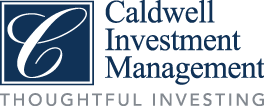Market Overview
Equity markets worldwide rallied for a second consecutive month in December, as investors grew increasingly confident that the global monetary landscape was about to shift in a more favourable direction.
Stocks continued to benefit from a further drop in bond yields during the month, as signs of cooling inflation stoked optimism that major central banks will soon pivot to a more dovish monetary policy stance after imposing nearly 4,000 basis points (“bps”) of interest rate increases since late 2021. Against this backdrop, the focus was squarely on the Federal Reserve and the trajectory of its rate-hiking campaign, which had lifted interest rates 11 times since March 2022, including four times this year. As expected, the world’s most influential central bank held borrowing costs steady at a 22-year high for a third consecutive time in December after the latest encouraging data for November suggested a sustainable slowdown in inflation while the economy remained resilient. Investors cheered, however, when the Fed hinted that its rate-hiking campaign had reached its conclusion and forecast that it could lower interest rates three times next year. The yield on the benchmark 10-year U.S. Treasury note ended December at 3.88%, 45 bps lower than a month earlier.
In Europe, interest rates in the eurozone remained at an all-time high after the European Central Bank (“ECB”) left them unchanged in the month amid data suggesting that inflation in the eurozone was approaching the central bank’s target rate. Despite the ECB’s pledge to maintain a restrictive monetary policy stance, traders were betting that it would cut rates next year, though the timing was not certain, due to expectations that the common currency bloc was headed for a period of economic stagnation. Meanwhile, in the UK, the Bank of England (“BOE”) also left interest rates steady but maintained a hawkish tone. However, encouraging data suggesting that inflation in the UK plunged in November to its lowest rate in over two years and signs the country was headed for an economic recession sparked speculation that the BOE will cut interest rates in the first half of 2024. In December, the yield on the 10-year German bund, Europe’s principal safe-haven asset, fell 45 bps, ending the month at 2.00%.
The final results from the third-quarter corporate earnings season painted a mixed picture of how inflation headwinds have impacted company profits. In the U.S., 81% of the companies in the S&P 500 Index topped consensus estimates, exceeding the long-term average of 66%. The third-quarter earnings growth rate increased 4.9% from a year earlier. Across the Atlantic, 52% of the companies in the pan-European STOXX 600 Index posted better-than-expected earnings, below the 54% that do so in a typical quarter. The year-over-year third-quarter earnings growth rate fell 12.9%. In Japan, 59% of the companies in the TOPIX Index reported positive earnings surprises, which was in line with the beat rate over the past four quarters. The third-quarter earnings growth rate contracted 20.7% from a year earlier.
Equity markets in both the developed and developing worlds climbed in December, with the former having outperformed the latter. In the U.S., expectations that the Fed would pivot to a more dovish monetary policy stance next year drove the S&P 500 higher, though the index lagged the broader market index, as investors engaged in some profit-taking near the end of the month. The S&P 500 ended the year less than 1% from an all-time high. In Europe, the STOXX 600 outperformed, as investors bet that the ECB would begin lowering interest rates next year amid signs that inflation in the eurozone was cooling and the region’s economy was on the brink of a recession. In Japan, the TOPIX climbed on news that the Bank of Japan would keep its main policy rate unchanged. Meanwhile, in China, the Hong Kong-based Hang Seng Index, which is comprised mostly of companies from the mainland, fell due to ongoing concerns about China’s mounting economic woes, including a real estate crisis and the growing risk of deflation, and the lack of a forceful response from Chinese policymakers. As expected, China’s central bank kept its lending rates unchanged in December.
Real estate was the best-performing sector in December, as falling bond yields have led investors to bid up shares of real estate investment trusts (“REITs”), which distribute the bulk of their earnings as tax-free dividends. Energy was the worst-performing sector, as shares of oil producers fell in sympathy with the fall in crude oil prices. Investors worried about falling demand for oil, especially from China, as production increases.
Outlook
There has been a striking difference in share price performance during 2023 between renewable energy and clean technology companies, and real asset-centric utilities, midstream energy, and transportation infrastructure companies. While top line growth still favors much of the renewable energy and clean technology space, and there is plenty of runway ahead, multiple factors have pressured shares in the short run, including decelerating order activity, excess channel inventory, higher borrowing costs and relief from last year’s exceptionally high oil & natural gas prices.
This has led to a meaningful pullback in valuation for companies across an incredibly dynamic and innovative space in both renewable energy and electrification, while the opportunity set ahead remains just as great and the direction of travel has in no way changed. The portfolio’s measured exposure to this higher volatility, higher risk category of infrastructure-related services, materials and technologies served us well last year and the portfolio is designed to maintain this defensive posture. But we also believe the valuation pullback for many high-quality companies poised to capture a meaningful share of this growing market represents an exciting opportunity for investors that we expect to take advantage of in 2024.
The share price performance of real asset-heavy, core infrastructure securities also had to contend with the headwind of substantially higher interest rates in 2023, leading to underperformance versus most growth-oriented broad equity market indices. But the combination of defensive business models, highly predictable revenues and cash flows, and strong inflation pass-through characteristics has demonstrated resilience. This leaves the portfolio’s holdings very well-positioned to benefit from an end to the rate-hiking cycle, when we expect eventual lower interest rates will be used to discount cash flows that have been adjusted higher either for regulatory or contractual inflation-adjustment, or the indirect benefit of inflation adjustment that tends to stem from owning and operating high fixed cost, long life assets.
In summary, we believe infrastructure investment allocations have been playing a relatively commendable defensive game in an aggressive and adverse monetary policy tightening phase. With key central banks signaling that interest rates have likely peaked, we are optimistic that market momentum is ready to shift in favor of companies with significant upside potential such as those in our portfolio.
The information contained herein provides general information about the Fund at a point in time. Investors are strongly encouraged to consult with a financial advisor and review the Simplified Prospectus and Fund Facts documents carefully prior to making investment decisions about the Fund. Commissions, trailing commissions, management fees and expenses all may be associated with mutual fund investments. Mutual funds are not guaranteed; their values change frequently and past performance may not be repeated.
Information and opinions presented have been obtained or derived from sources believed by Lazard Asset Management LLC or its afflliates (“Lazard”) to be reliable. Lazard makes no representation as to their accuracy or completeness. All opinions expressed herein are as of the published date and are subject to change.
Allocations and security selection are subject to change. The performance quoted represents past performance. Past performance is not a reliable indicator of future results. Mention of these securities should not be considered a recommendation or solicitation to purchase or sell the securities. It should not be assumed that any investment in these securities was, or will prove to be, profitable, or that the investment decisions we make in the future will be profitable or equal to the investment performance of securities referenced herein. There is no assurance that any securities referenced herein are currently held in the portfolio or that securities sold have not been repurchased. The securities mentioned may not represent the entire portfolio.
Equity securities will fluctuate in price; the value of your investment will thus fluctuate, and this may result in a loss. Securities in certain non-domestic countries may be less liquid, more volatile, and less subject to governmental supervision than in one’s home market. The values of these securities may be affected by changes in currency rates, application of a country’s specific tax laws, changes in government administration, and economic and monetary policy. Emerging markets securities carry special risks, such as less developed or less efficient trading markets, a lack of company information, and differing auditing and legal standards. The securities markets of emerging markets countries can be extremely volatile; performance can also be influenced by political, social, and economic factors affecting companies in these countries.
Securities and instruments of infrastructure companies are more susceptible to adverse economic or regulatory occurrences affecting their industries. Infrastructure companies may be subject to a variety of factors that may adversely affect their business or operations, including additional costs, competition, regulatory implications, and certain other factors.
Certain information contained herein constitutes “forward-looking statements” which can be identified by the use of forward-looking terminology such as “may,” “will,” “should,” “expect,” “anticipate,” “target,” “intent,” “continue,” or “believe,” or the negatives thereof or other variations thereon or comparable terminology. Due to various risks and uncertainties, actual events may differ materially from those reflected or contemplated in such forward-looking statements.
Published on January 18, 2024.

